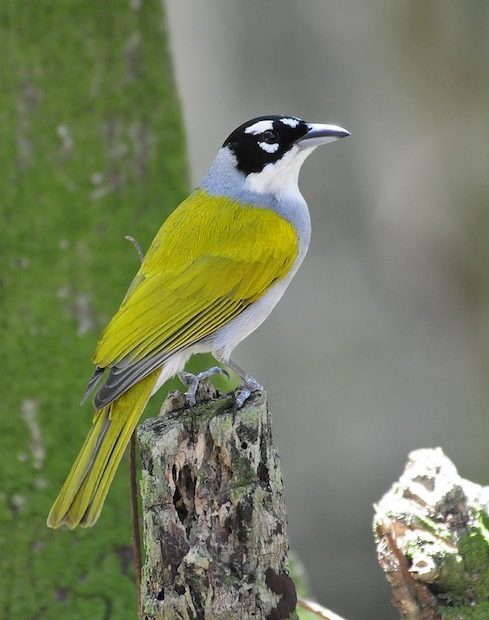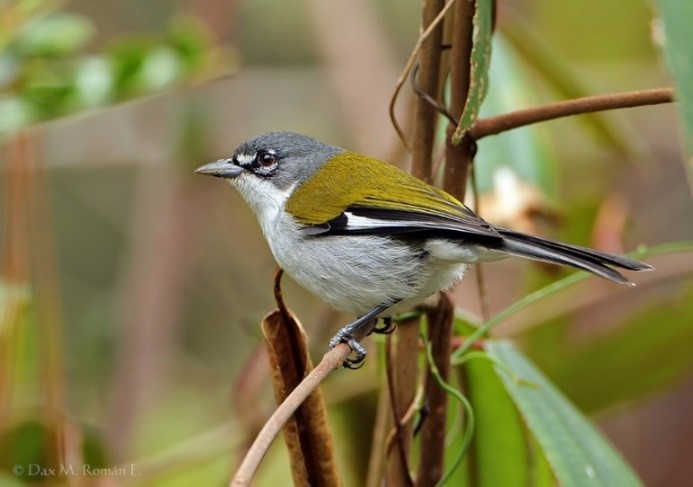Phaenicophilidae: Hispaniolan Tanagers

Black-crowned Palm-Tanager. © Kurt Hennige
The “Hispaniolan tanagers” are newly recognized family of songbirds endemic to Hispaniola. They were formerly classified as atypical tanagers and wood warblers (i.e., as members of the Thraupidae and Parulidae), but have been reclassified as a separate family based on genetic studies that have shown that this group represents a single evolutionary branch that diverged from other branches more than twelve million years ago.
The Phaenicophilidae comprise four species that fall into two pairs: the palm-tanagers (Phaenicophilus) and two single-species genera (Xenoligea and Microligea) that were formerly classified as wood warblers. As a group, they do not exhibit any visibly distinctive family trait. The palm-tanagers are large and robust with heavy bills, and the warbler pair look and behave much like wood warblers. All four species share roughly the same palette of olive, gray, black, and white plumage and black-and-gray bills.
References
Barker, F.K., K.J. Burns, J. Klicka, S.M. Lanyon, and I.J. Lovette. 2013. Going to extremes: contrasting rates of diversification in a recent radiation of New World passerine birds. Systematic Biology 62:298-320.
Barker, F.K., K.J. Burns, J. Klicka, S.M. Lanyon, and I.J. Lovette. 2015. New insights into New World biogeography: An integrated view from the phylogeny of blackbirds, cardinals, sparrows, tanagers, warblers, and allies. Auk 132:333-348.
Roberson, D. 2017. Bird Families of the World: Hispaniolan Tanagers: Phaenicophilidae, http://creagrus.home.montereybay.com/Caribbean_tanagers.html. (Posted May 20, 2017. Accessed June 10, 2019.)
